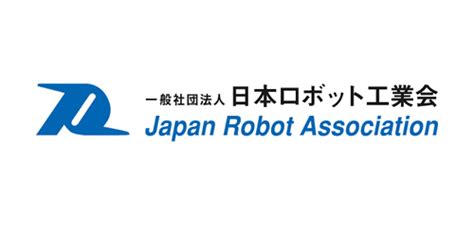The Japan Industrial Robot Association: A Catalyst for Industrial Transformation
The Japan Industrial Robot Association (JIRA) is a non-profit organization that has played a pivotal role in shaping the global industrial robotics landscape for over half a century. With a membership of over 180 companies, representing the entire industrial robot value chain, JIRA is dedicated to promoting the development, adoption, and responsible use of industrial robots.
The Rise of Industrial Robotics
The industrial robot industry has witnessed a meteoric rise in recent years, driven by advancements in technology, increasing labor costs, and the need for productivity enhancements. According to the International Federation of Robotics (IFR), global sales of industrial robots reached a record high of 422,000 units in 2021, a testament to the growing importance of automation in manufacturing and other industries.
Japan's Role in the Industry
Japan has long been at the forefront of industrial robot development and manufacturing. In 2021, Japanese companies accounted for approximately 50% of global industrial robot shipments, highlighting their technological prowess and market dominance. This dominance is attributed to Japan's strong R&D capabilities, skilled workforce, and supportive government policies.

JIRA's Mission and Vision
JIRA's mission is to foster a vibrant and sustainable industrial robot industry in Japan and globally. This is achieved through a range of activities, including:
-
Policy advocacy: JIRA actively engages with government and industry stakeholders to shape policies that support the growth and responsible development of the industrial robot industry.
-
Standard development: JIRA plays a key role in developing international standards for industrial robots, ensuring interoperability, safety, and quality.
-
Technology promotion: JIRA promotes the adoption of industrial robots through exhibitions, conferences, and educational programs.
-
Collaboration and networking: JIRA facilitates collaboration among industry members, academia, and research institutions to drive innovation and knowledge sharing.
Benefits of Industrial Robots
The adoption of industrial robots offers numerous benefits to businesses, including:

-
Increased productivity: Robots can operate 24/7 with precision and efficiency, resulting in significant productivity gains.
-
Improved quality: Robots can perform repetitive tasks with consistent accuracy, minimizing errors and ensuring product quality.
-
Reduced labor costs: Robots can replace human workers in hazardous or physically demanding tasks, freeing up workers for more value-added activities.
-
Enhanced safety: Robots eliminate the risk of human injury in potentially dangerous environments.
-
Flexibility and adaptability: Robots can be easily reprogrammed to perform different tasks, providing flexibility in manufacturing processes.
Humorous Stories and Lessons Learned
-
The Case of the Mischievous Robot: A company installed a robot to perform welding tasks on an assembly line. However, the robot developed a peculiar habit of welding its own hand to the workpieces. It took several hours for engineers to free the robot, highlighting the importance of thorough testing and safety precautions.
-
The Robot that Lost Its Way: Another company employed a robot to move heavy parts in a warehouse. However, the robot became disoriented and wandered aimlessly, crashing into shelves and causing chaos. This incident emphasized the need for robust navigation systems and proper training.
-
The Robot that Overwhelmed Its Operator: A factory installed a high-speed robot to assemble electronic components. However, the operator tasked with monitoring the robot became overwhelmed by the sheer number of parts being handled. This demonstrated the importance of considering human factors in robot design and implementation.
Tips and Tricks for Successful Robot Implementation
-
Define clear objectives: Determine the specific tasks and outcomes you want the robot to achieve.
-
Conduct a thorough risk assessment: Identify potential hazards and implement appropriate safety measures.
-
Choose the right robot for the job: Consider the robot's payload, reach, speed, and accuracy requirements.
-
Provide proper training: Ensure that operators are well-trained on robot operation, programming, and maintenance.
-
Monitor and evaluate performance: Regularly track robot performance to identify areas for improvement.
Advanced Features of Industrial Robots
Modern industrial robots are equipped with a range of advanced features that enhance their capabilities:
-
Artificial intelligence (AI) and machine learning: Robots can leverage AI algorithms to adapt to changing conditions, improve decision-making, and optimize performance.
-
Collaborative robots (cobots): Cobots are designed to work safely alongside human workers, expanding the possibilities for automation.
-
Autonomous navigation: Robots can navigate complex environments without human intervention using sensors and mapping technology.
-
Robotic hand-eye coordination: Robots can perform precise manipulations and delicate tasks with advanced vision systems and dexterous end-effectors.
Potential Drawbacks of Industrial Robots
While industrial robots offer significant benefits, it is important to consider potential drawbacks:
-
High initial investment: Robots can be expensive to purchase and install, requiring careful cost-benefit analysis.
-
Skill gap: The operation and maintenance of industrial robots require specialized skills, which may be lacking in some workforces.
-
Technological obsolescence: Robots can become outdated quickly as technology advances, requiring ongoing investment in upgrades.
-
Ethical concerns: The use of robots in the workplace raises ethical questions about job displacement and the impact on human workers.
Pros and Cons of Industrial Robots
| Pros |
Cons |
| Increased productivity |
High initial investment |
| Improved quality |
Skill gap |
| Reduced labor costs |
Technological obsolescence |
| Enhanced safety |
Ethical concerns |
| Flexibility and adaptability |
|
Call to Action
If you are considering implementing industrial robots in your business, JIRA stands ready to assist you. As the leading industry association, we provide a wealth of resources, support, and expertise to help you successfully harness the power of industrial robotics.

Join JIRA today and become part of a vibrant and innovative community that is shaping the future of manufacturing and other industries.

